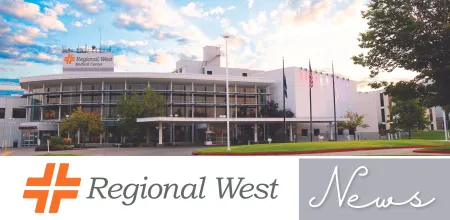Osteoporosis Awareness − How Strong Are Your Bones?

SCOTTSBLUFF, Neb., – After age 60, about ten percent of adults experience thinning of the bones known as osteoporosis. There are no symptoms for the condition, but over time it may increase the risk of bone fractures, loss of height, persistent back pain, and forward-stooping posture.
Regional West encourages women over age 65 and those with a family history of osteoporosis to include a bone mineral density test in their annual wellness exams.
“Osteoporosis is usually a silent disease,” said Leslie Eiland, MD, with Regional West Physicians Clinic-Endocrinology. “Often, a patient is not aware they have osteoporosis until they break a bone. A fracture, especially in an older person, can be devastating, negatively impacting quality of life but also mortality. This is why screening for osteoporosis and taking action to prevent fractures are so important.”
To prevent osteoporosis and avoid problems with brittle bones, Regional West encourages regular weight-bearing exercise, such as walking, stair climbing, and jumping jacks; muscle-strengthening exercises; enjoying a diet rich in fruits, vegetables, calcium, and vitamin D; not smoking; and avoiding alcohol.
Visit www.nof.org/patients/what-is-osteoporosis for information on how to help build strong bones and prevent or manage osteoporosis.
Bone density tests are recommended for women age 65 and older. To schedule a test, contact your primary care provider or Regional West Physicians Clinic-Women’s Center.
Regional West Health Services in Scottsbluff, Neb., is the parent company of Regional West Medical Center, a 188-bed regional referral center and one of three Level II Trauma Centers in the state. As the region’s only tertiary referral medical center, Regional West offers care that spans more than 32 medical specialties provided by over 28 physician clinics. With nearly 300 providers, and over 2,000 employees, Regional West provides comprehensive and innovative health care services for the people of western Nebraska and the neighboring states of Colorado, South Dakota, and Wyoming.








